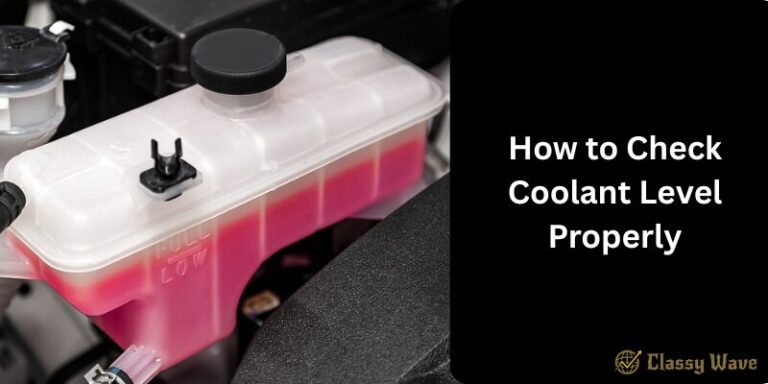What to Do If Your Car Won’t Start | Classy Wave
Few things are more frustrating than getting into your car, turning the key (or pushing the start button), and realizing nothing happens. Whether you’re late for work or stuck in a parking lot, a car that won’t start can throw your whole day off track. But don’t panic — most of the time, the problem is something simple that you can diagnose and sometimes fix yourself. Let’s break down what to do step by step when your car refuses to start.
1. Stay Calm and Safe
First things first — stay calm and ensure your safety.
If your car won’t start in the middle of the road or a parking area, turn on your hazard lights. If it’s dark, use your phone’s flashlight or keep your car’s interior light on to stay visible to others.
2. Check the Basics
Before you assume the worst, start with the obvious.
- Is your car in Park (P) or Neutral (N)? Automatic cars won’t start unless they’re in these positions.
- If it’s a manual transmission, make sure the clutch is fully pressed down.
- Double-check that your steering wheel isn’t locked — wiggle it gently while turning the key.
Sometimes, the simplest mistakes are the real culprits.
3. Listen for Sounds
When you turn the key or press the start button, listen carefully.
- Clicking sound: The battery may be weak or dead.
- Grinding noise: There could be an issue with the starter motor.
- No sound at all: Possibly a problem with the ignition switch or battery connections.
The sound gives you valuable clues about what’s wrong.
4. Check the Battery
The most common reason a car won’t start is a dead or weak battery.
- Turn on the headlights or interior lights. If they’re dim, your battery is likely low.
- Try jump-starting the car with jumper cables or a portable jump starter.
If the car starts after a jump, let it run for at least 15–20 minutes to recharge the battery. But if it dies again shortly after, your alternator might be failing.
5. Inspect the Battery Terminals
Corroded or loose battery terminals can block power from reaching the starter.
- Open the hood and check the battery connections.
- Look for white or greenish residue — that’s corrosion.
- If safe to do so, clean the terminals with a dry cloth or a brush.
Always disconnect the negative (-) terminal first when handling battery cables.
6. Check the Fuel Level
This might sound obvious, but it happens more often than you think!
If your car’s fuel gauge is broken or stuck, you might be out of fuel without realizing it. Add a few liters of fuel and try starting again.
Also, make sure the fuel pump is working — when you turn the ignition on (without starting), you should hear a brief humming sound from the rear of the car.
7. Check for Faulty Starter Motor
If your lights and accessories work but the car won’t crank, your starter motor could be the issue.
You might hear a single loud click when trying to start. In that case, gently tapping the starter motor with a wrench can sometimes help it engage temporarily — but it’s a sign you’ll need a replacement soon.
8. Look at the Dashboard Lights
Your car’s dashboard lights can help identify issues.
- A battery icon means a charging system problem.
- A check engine light could indicate a deeper mechanical issue.
- No lights at all? You may have an electrical power issue or blown fuse.
Take note of any warning lights and check your car manual for guidance.
9. Try a Different Key or Fob
Modern cars rely heavily on electronic keys. If the key fob battery is dead, your car might not recognize it.
Try replacing the fob battery or using a backup key. If your car has a push-start button, press the key fob directly against it — many vehicles have a manual override feature for dead fobs.
10. Check the Ignition Switch
If your battery and starter are fine but the car still doesn’t start, the ignition switch might be faulty.
Try turning on accessories like the radio or headlights — if they don’t work, that’s another clue your ignition switch might need replacement.
11. Inspect the Fuses
A blown fuse can easily prevent your car from starting.
Locate the fuse box (usually under the dashboard or near the engine bay) and look for any burnt or broken fuses, especially those labeled “starter,” “ignition,” or “ECU.”
Replace them with fuses of the same rating.
12. Test the Alternator
If your car starts but stalls shortly after, the alternator might not be charging the battery properly.
A quick test: turn on your headlights and engine, then rev the engine slightly. If the lights dim or flicker, the alternator could be failing.
13. Cold Weather Issues
If it’s freezing outside, your battery might lose power faster, or the engine oil could be too thick. Try warming up the battery using a thermal blanket or moving the car to a warmer area if possible. You can also use thinner winter-grade engine oil.
14. Check the Security System
Sometimes your car’s anti-theft system can mistakenly prevent the engine from starting. Look for a blinking security light on your dashboard. Reset your alarm system or use your original key to deactivate it.
15. When to Call for Help
If you’ve tried everything and your car still won’t start, it’s time to call for professional help.
Contact roadside assistance, a mobile mechanic, or a towing service. Explain the symptoms clearly — it can help them diagnose faster.
Conclusion
A car that won’t start can be stressful, but understanding the possible reasons helps you react calmly and logically. Most of the time, the issue is related to the battery or starter, both of which are fixable. Always keep jumper cables, a flashlight, and a basic toolkit in your car for emergencies. And if the issue persists, don’t delay — get your car checked by a certified mechanic to avoid further damage.






